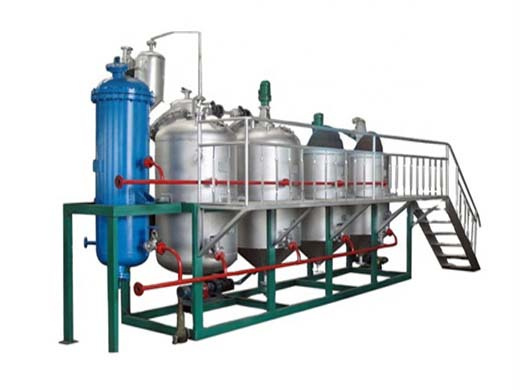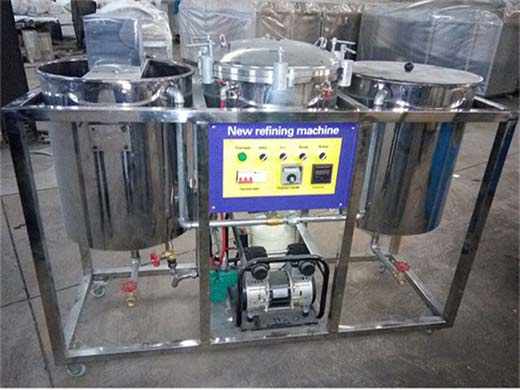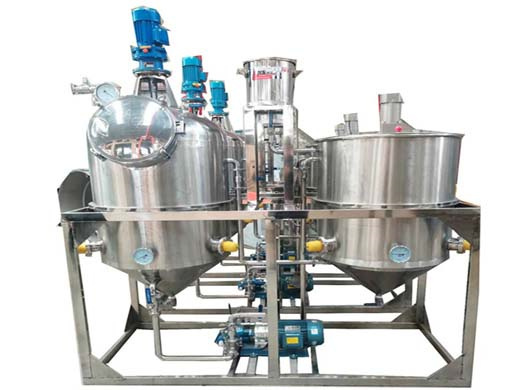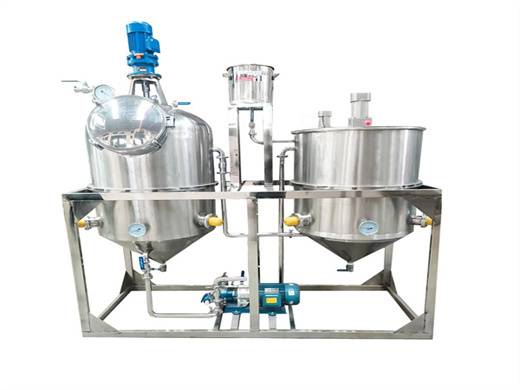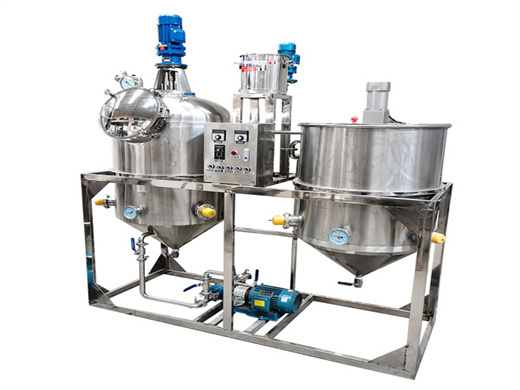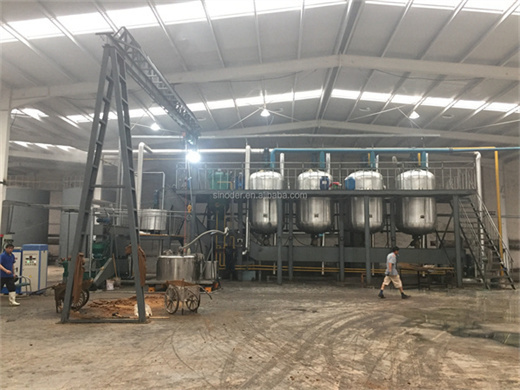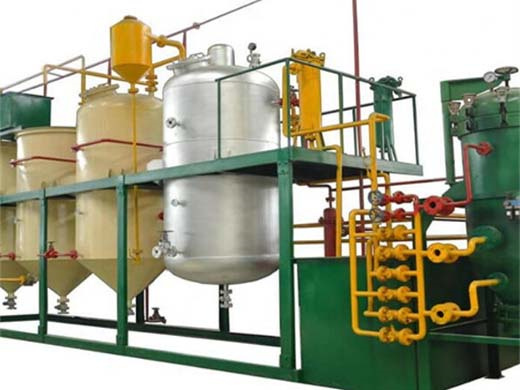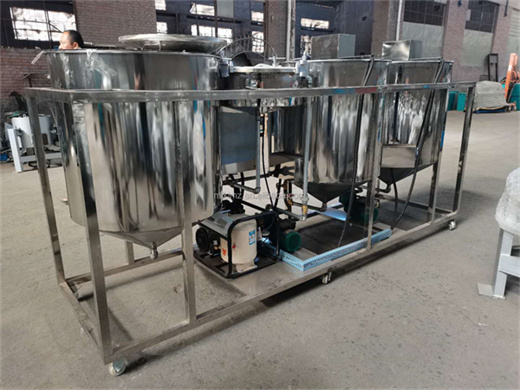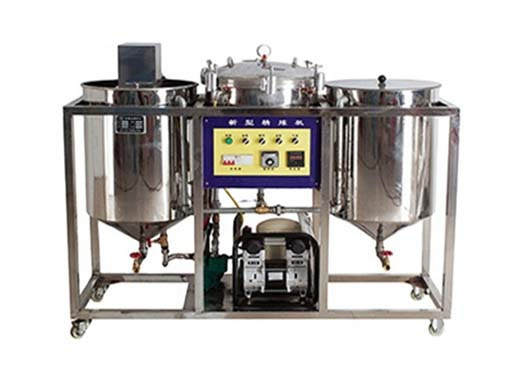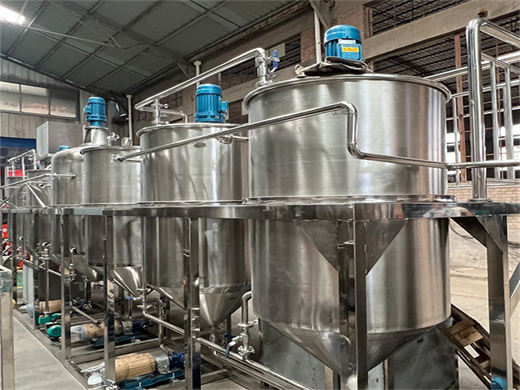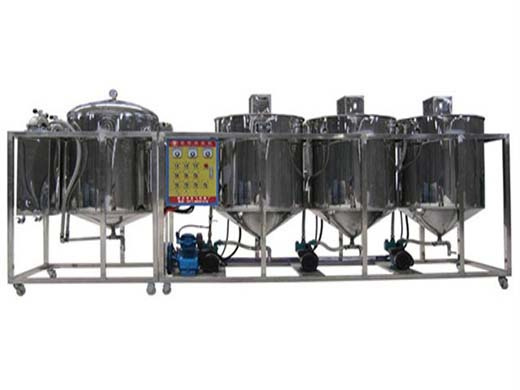middle peanut oil press popular 90% oil yield
-
Usage: Screw oil press machine, mainly used to making cooking oil
- Type: Screw oil press machine
- , Automatic
- Production Capacity: 100 kg/h - 1000kg/h
- Place of Model Number: 1st series
- Voltage: 380V 410V
- Power(W): according to capacity
- Dimension(L*W*H): 1200*400*900mm3
- Certification: CE and ISO
- Function: getting edible oil from oil seeds
- Machine type: Screw oil press machine
- Raw material: Peanut Seed
- Power: Motor or diesel motor
The oil extraction by mechanical pressing is the most common method for continuous treatment of oleaginous seeds without solvent. Different types of presses can be used depending on the purpose (expeller, expander, and twin-screw extruder) and on the capacity range (3 kg h−1 to 150 t day−1). At the laboratory scale, many authors have highlighted the effect of operating parameters (screw
The initial oil content of peanut was 48.90 ± 0.30%. The oil extraction yield of untreated peanut was 57.21 ± 1.51%. As can be seen from Figure 1, the increasing microwave pretreatment time significantly (p < 0.05) increased the oil extraction yield. For the 1, 2, 3
Effects of Roasting Temperatures on Peanut Oil and Protein Yield Extracted via Aqueous Enzymatic Extraction and Stability of the Oil Body Emulsion
- Usage: Peanut oil expeller machine
- Type: Peanut oil expeller machine
- Production Capacity: 20-500T/D
- Model Number: XP-60
- Voltage: 220V/380V/440V
- Power(W): 100kw
- Dimension(L*W*H): 2300*1650*1600mm
- Weight: 1200 KG
- Certification: ISO9001/CE/BV
- Raw material: Peanut Seed
- Process type: Peanut oil expeller machine
- Water cosumption: ≤ 0.5 t/t material
- Power consumption: ≤ 15 kw*h/t material
- Steam consumption: ≤ 320 kg/t mateiral
- Manufacturing experience: mroe than 30 Years
- Advantage: Energy Saving
- Solvent consumption: ≤ 3 kg/t material
- Workshop name: Peanut oil expeller machine
- Service: Arrange engineers
Therefore, this study aimed to investigate the effects of pretreatment at different roasting temperatures on peanut oil and protein yield extracted through AEE. The results showed that peanut oil and protein extraction rates peaked at 90 C, 92.21%, and 77.02%
Sunflower oil, soybean oil, palm oil, rapeseed oil and peanut oil are commonly used in cooking [70]. During cooking, oil is added to food to give it taste, colour and fragrance. However, the high temperature and length of the cooking process will not only destroy the unsaturated fatty acids and trace active substances but also lead to the oxidation of the oils into primary or secondary
Processes | Free Full-Text | Optimization Methods for the Extraction of Vegetable Oils: A Review - MDPI
- Usage: Peanut oil extractor
- Type: Peanut oil extractor
- Production Capacity: 1-100TPD
- Model Number: LD Peanut oil extractor
- Voltage: 380v or according to the local voltage
- Power(W): According to the capacity of Peanut oil extractor
- Dimension(L*W*H): 1610x615x1260mm of Peanut oil extractor
- Weight: 1050 KG of Peanut oil extractor
- Name: Peanut oil extractor
- Residual oil in meal: Less than 1%
- Crude oil moisture and volatile matter: Less than 0.30%
- Consumption: Low
- Oil grade: 1st,2nd,3rd
- After sale service: Engineer abroad serivce
- Port: LDngdao
Under optimum processing conditions of 19 MPa applied pressure, 90 C pressing temperature, and 3.8% (w.b.) moisture content, Erna et al. [] obtained oil that met the DIN 51605:2010–10 standard for fuels made from plant oils except for its phosphorus content
Meanwhile, the effect of the geographical origin of peanut on the quality of cold‐pressed peanut oils (CPOs) was studied. The average acid value of CPOs in southern China was higher than that in northern China (0.49 mg KOH/g versus 0.22 mg KOH/g, p > .05). In addition, the average of oleic acid content, ratio of oleic acid to linoleic acid (O
Economic and Academic Importance of Peanut
- Usage: Peanut Oil
- Production Capacity: 20-2000T/day
- Model Number: 02
- Voltage: 380V
- Power(W): standard
- Dimension(L*W*H): standard
- Weight: standard
- Certification: CE,ISO
- Equipment Name: Peanut Oil Mill
Peanut seeds (kernels), the most important product of peanut are a rich source of nutrition and provide several health benefits. The kernels contain 40–55% oil, 20–35% protein and 10–20% carbohydrate. They provide 567 kcal of energy from 100 g of kernels (Jambunathan 1991 ). The peanut oil contains seven fatty acids of which palmitic (7
Our automatic peanut oil press has been popular due to its stainless steel structure, automatic temperature control function, and equipped vacuum filter, enhancing the purity of the resulting oil. The machine’s capacity, such as a 5L stainless steel bucket, often determines the scale of operations and the cost budget for manufacturers.
A novel process for preparing low-fat peanuts: Optimization of the oil extraction yield with limited structural and organoleptic
- Usage: Peanut Oil
- cooking oil expeller plant
- Production Capacity: 10-5000T/D
- Model Number: DT-10030
- Voltage: 220V/380V/415V
- Power: 2.2KW
- Dimension(L*W*H): 1910*550*765 mm
- Weight: 420 KG
- Raw material: Peanut Seed
- Function: Vegetable Oil
- cooking oil expeller plant: Peanut,etc
Ammann (1935) reported a 60–70% oil yield when peanuts were pressed at 34.3 MPa for 45–60 min, while an 80% oil removal over 10 min at 35.1 MPa was reported by Wong and Sackenheim (1992). Compared to the literature, the largest advantage observed from our experimental results is that high extraction yields are being achieved at the lowest cost due to a relatively low applied pressure
The conditioned peanut kernels are transported by a conveyor to the twin-screw press for cold pressing; the cold-pressed crude oil and cold-pressed peanut meal with low denaturation will be obtained. After the cold-pressed crude oil is filtered with frame filter, product oil is obtained, which will be packaged by a filling machine to form cold-pressed peanut oil products ( Fig. 3.8 ).
- What is a high oleic peanut?
- Peanut Science (2016) 43 (1): 1¨C11. High oleic cultivars are becoming increasing prevalent in the peanut industry due to their increased shelf life compared to conventional cultivars. High oleic peanuts are typically defined as having oleic acid/linoleic acid (O/L) ratios ¡Ý 9, whereas most traditional varieties have O/L ratios near 1.5-2.0.
- What is crude peanut oil?
- Crude peanut oil, i.e. unrefined, was mechanically expressed using a lab scale Carver Press or received from a commercial supplier. Peanuts, including two commercial lots of normal oleic peanuts, and several high oleic accessions from the 2011 Uniform Peanut Performance Tests (UPPT) program, were utilized to prepare the 16 test samples ( Table 2 ).
- How oleic is roasted peanut?
- For example, roasted high oleic peanuts (average O/L ?=? 27.3) stored at 25 C and a 40% relative humidity were estimated to reach a PV of 10 meq/kg at approximately 360 d versus 32 d for normal oleic peanuts (average O/L ?=? 2.2) ( Braddock et al. 1995 ).
- What are the characteristics of a good peanut?
- For example, in confectionary peanut, the quality attributes targeted include high sugar, high protein, low oil, attractive seed size and shape, pink or tan seed color, ease of blanching and high oleic/linoleic ratio, while for developing RUTF and food supplement based products, peanuts with high protein, minerals and vitamins are preferred.
